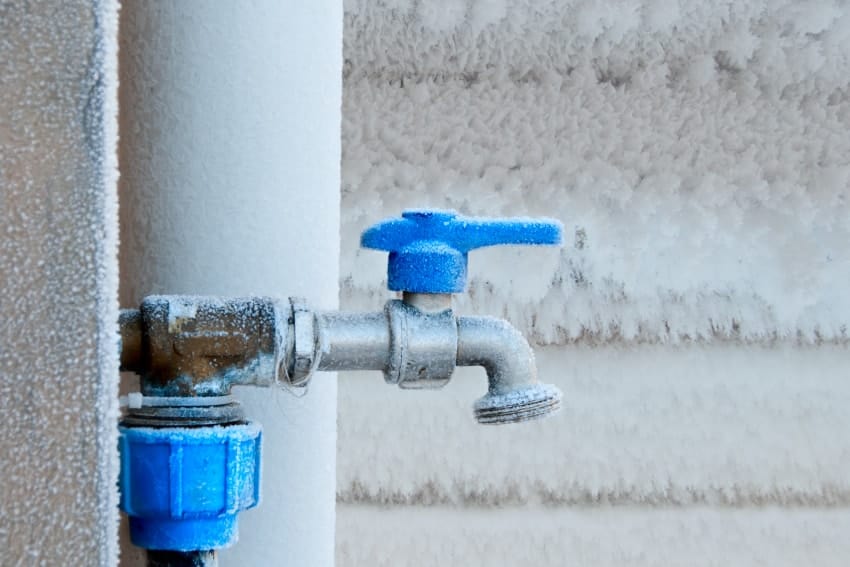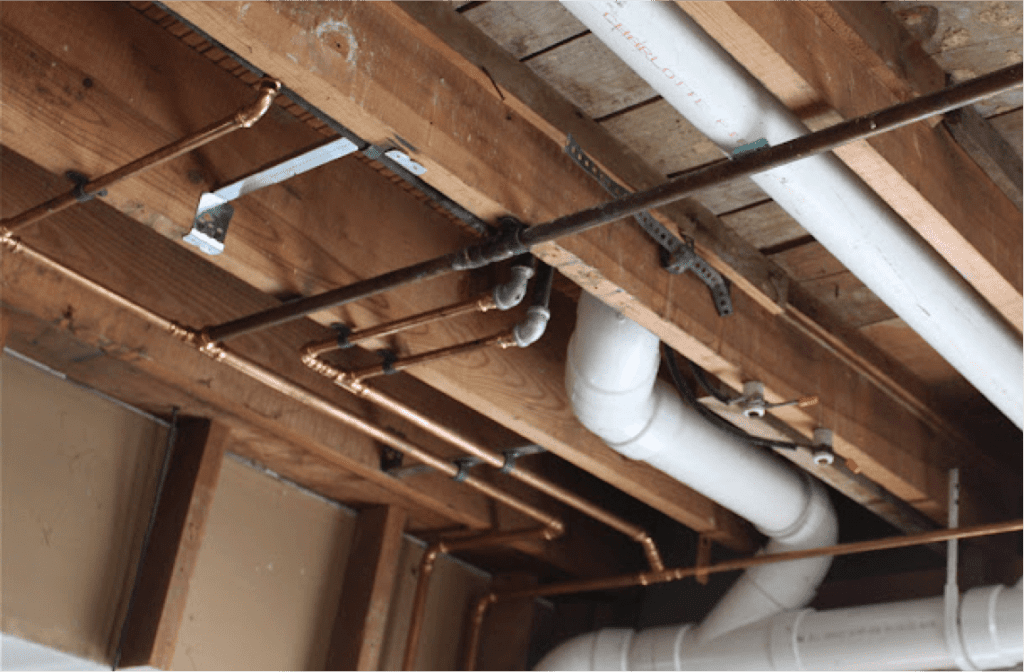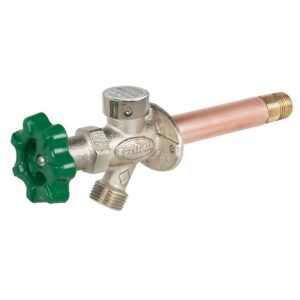
When the season turns cool, it’s time to winterize your outdoor faucet. This is probably one of a long list of fall chores, but resist the temptation to skip it. If you don’t get around to winterizing your outdoor faucet before the first frost, the water in your pipes could freeze, with disastrous (and expensive!) results.
Fortunately, it can be pretty quick and simple to winterize an outdoor faucet, whether you have the standard or the frost-free type. Just follow our easy step-by-step guide.
Winterize Your Outdoor Faucet (Standard)

- Start indoors, in your basement. Locate the water shutoff valve that is nearest to the outdoor faucet. Turn it off.
- If the tap is an older model, you might need to open an indoor drainage port. Be sure you’re equipped with a container to catch the water which will run out. (Half a litre will be big enough.)
- If you don’t have an indoor drainage port, turn on the outdoor faucet and let any remaining water drain out. Don’t forget to switch it off when you’re finished!
- Take off the hose and remove any spray nozzle(s), dry thoroughly. Drain each hose completely to avoid damage from water freezing and expanding.
- Now is a good time to check over the hoses and repair any tiny holes.
- Coil hoses neatly, making sure there are no kinks. Then store in a sheltered spot outside of direct sunlight, such as your garage or garden shed.
Winterize Your Outdoor Faucet (Frost-Free)
If you have a frost-free faucet outside, great! This device is specially designed to make it easier to winterize your outdoor faucet. When properly installed, it will permit water that remains in the pipe to safely drain out when you shut off the valve.

Here’s how to winterize this outdoor faucet:
- Turn off the water shutoff valve that feeds the outdoor tap.
- Disconnect all hoses which are attached to the outdoor faucet and store as above. This is a crucial step. Leaving a hose attached will prevent the water from draining and as a result, might cause your outdoor faucet to crack and leak. And that’s exactly what you don’t want.
Learn Another Way To Prevent Plumbing Damage
Winterizing your outdoor faucet is a crucial task to prevent water damage.
Here’s another way to protect your Calgary home — make sure your plumbing system is safe from the following hazards.
- “Poly B” (polybutylene) piping, installed in many local homes constructed from the 1970s to the 1990s, is a serious risk for leakage and water damage.
- “Kitec” piping, which was used in many pre-2007 in-floor heating systems, is also a leak hazard – both the pipe and fittings.
If you have either of these types of piping, we strongly recommend inspection and replacement by our professional plumbers. Consider investing in a protection plan, which provides regular inspection and maintenance for your home plumbing, heating, and cooling systems. Your home deserves it!
Want More Plumbing Expertise?
Whether you need plumbing installation, maintenance, or repair in the Calgary area, call Knight Plumbing at (587) 317-2535. Our outstanding team of professional plumbers is ready to help.


